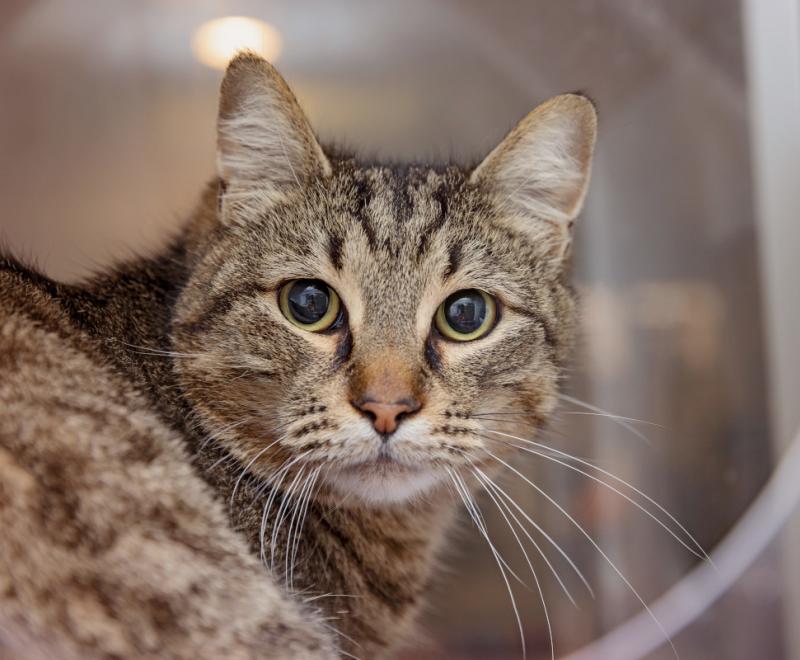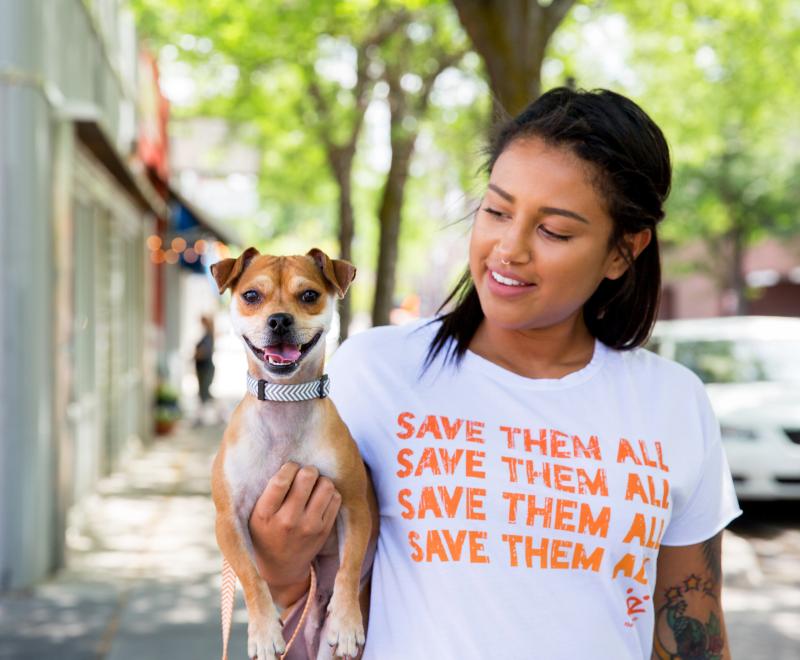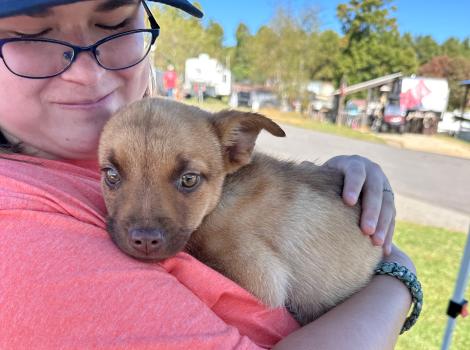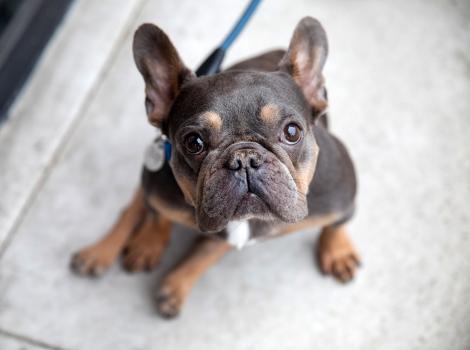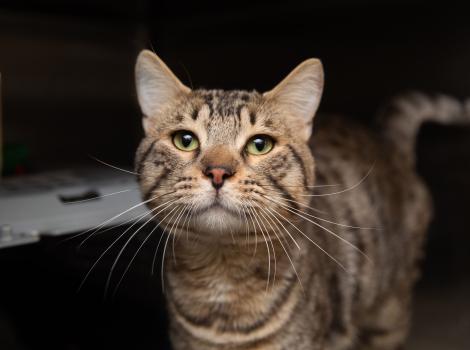No-kill in Sevier County: A big win for dogs and cats

Long before animal welfare became her chosen career, Shelby Jackman knew all about animal shelters. At age 5, she would accompany her police chief dad on his regular rounds of the local no-kill shelter that he managed. Early on, she learned about saving lives.
So, when grown-up Shelby became manager of the rural Sevier County (Utah) Animal Shelter in spring 2022, her resolve to make sure that the county’s animals could live out their lives in peace was not only top of mind but also at the top of her priority list. She immediately began nudging the Sevier County shelter toward no-kill. By January 2023, with help from Best Friends and other organizations, the shelter’s save rate had reached 90%, the no-kill threshold.
Best Friends’ goal is for all shelters in the country to reach no-kill in 2025. Assisting animal shelters like Sevier County and others around the country to reach lifesaving milestones is one of the ways that Best Friends supports shelters in reaching that goal.

Determined to make a difference
“From the beginning, I really wanted to help the animals because it’s not their fault that they are put in these situations, and it’s not like they have an option,” Shelby says. “It’s very important to do everything humanly possible to seek out every resource to help these animals live their best lives.”
With careful planning and collaboration with partner animal shelters in Utah and surrounding states, Shelby managed the flow of animals in and out of the shelter well enough in 2023 to record an average monthly save rate of 94%. “Certainly, our recent achievement wouldn’t be possible without the constant, ongoing support of the sheriff’s office and the entire community,” she says.
[Helping a small rural animal shelter sustain no-kill]
"It's no small feat for a rural shelter like Sevier County to achieve no-kill status,” says Michelle Dosson, Best Friends Pacific regional director. “But to be able to average such a high save rate for the entire year is a testament to the hard work, dedication, and strong leadership of their small but mighty team. We're looking forward to continuing our collaborative partnership and supporting their lifesaving progress."
Nick Lippincott, Best Friends senior manager of lifesaving programs who collaborates with Shelby to support the shelter, isn’t surprised by Sevier County’s progress. “Shelby is very motivated, very responsive, and very receptive to help,” says Nick. “She wants to make improvements, and even if Best Friends wasn’t there, you just know she’s very determined to make that shelter better for the community.”

Adamant about no-kill
Having previously worked for several other animal welfare organizations in Utah, Shelby had a mix of experience that matched well with the position requirements of shelter manager, which reports to Sevier County Sheriff Nate Curtis. She was transparent in her hiring interview: If she took the job, she wanted Sevier County to become a no-kill shelter.
“I felt it was important to share my goals and objectives with the selection committee as to how I wanted to achieve a no-kill status. Being so open about my passion for animals helped me get the position,” says Shelby. “I felt it equally important to emphasize the importance of getting our animals spayed and neutered.
“I think it was a bit shocking to them at first,” says Shelby. “But I felt I had to establish what we were going to do. I just told the sheriff: ‘If you guys hire me, these are my goals — to get all of our animals spayed and neutered and become a no-kill shelter. They agreed. Being so open about it helped me get the position.”
Once she came aboard, the job presented the usual array of early challenges, including the need to inform county residents about the need to spay or neuter their pets. “Lack of awareness about spay/neuter is typical at rural shelters,” she says. “There’s a lot of educational work to be done with the public.”

Establishing a network for lifesaving
One of Nick’s first projects was to help Shelby set up a website, which would enable her to address a big need: establishing regular communications with county residents. Once the site went live, she was able to communicate with pet lovers, especially those in the larger towns of Richfield, Salina, and Monroe.
Another critical need was the ability to gather, store, and share information about animals entering and leaving the shelter. To do that, the shelter would need computer software to replace an outdated paper filing system. “With this technology we’re able to store our information a lot better and keep track of things more efficiently,” says Shelby. “It’s really helped us.”
Nick taught software classes for personnel at the Sevier County Sheriff’s Office, the Richfield Police Department, and the Salina Police Department, resulting in the three agencies now having the ability to share information. “Getting that buy-in from those municipalities was important,” Nick says. “It was critical to the goal of establishing a no-kill community.”
Officers will be able to use the software in the field, where they can research microchips immediately upon finding an animal. This not only increases the likelihood of an animal being reunited with their family faster, but it also helps save critical shelter space for animals with nowhere else to go.

Vaccines, microchips, spay/neuter
With just two employees at the shelter, opportunities to hold events were limited during Shelby’s first six months on the job. But by January 2023, they were ready for the county’s first official event, supported by Best Friends, which provided free vaccines and microchips. A total of 154 dogs and 29 cats from all around the county were vaccinated and chipped. The shelter’s first spay/neuter clinic followed six months later, with 40 dogs and 101 cats being treated.
Both clinics, in addition to providing needed care for the animals, provided the first flow of information to populate the shelter’s new database. Now that data — readily accessible to Shelby and the rest of the sheriff’s department — helps the shelter in its everyday decision-making on many county animal issues.
[Faces of No-Kill: Baby Girl in Brownsville, Texas]
"The clinics were some of the best things ever to happen at our shelter,” Shelby says. “They had never had a spay/neuter event since the shelter opened roughly 20 years ago.”
While the goal is to have shelters working with Best Friends implement as many progressive animal care programs as possible, Michelle says it really depends on what each shelter can support and what it needs the most.
“Probably the most important thing this year for Sevier County is establishing regular access to spay/neuter, so they are able to promote local adoptions, increase live outcomes, and focus on transport for the animals who truly need it,” Michelle says. “We are working with a local veterinarian who has agreed, with our support, to do spay/neuter surgeries and some emergency medical treatments.”

Steady as she goes for 2024
Shelby’s goals for 2024 are clear: maintaining that no-kill save rate for another 12 months, continuing to inform residents about the importance of spaying and neutering their pets, and gradually increasing services for the public through more adoption events and animal care clinics.
In addition to those goals, the linchpin to success in 2024 for Sevier County just might be as simple as having a vet close by. “It’s going to be so cool, like night and day,” Shelby says. “Free or low-cost spay/neuter is so important here because so many people here can’t afford to get their animals fixed. Appointments for our last clinic filled up fast, and we couldn’t take any more. And now, people are asking us when our next one will be.”
From following her dad around the animal shelter as a youngster to running her own shelter in rural Utah, Shelby Jackman has her eye on the ball for a successful 2024. “You just gotta take baby steps,” she says. “But, you know, I feel that in the short time I’ve been here, we’ve been able to accomplish quite a bit.”
Let's make every shelter and every community no-kill by 2025
Our goal at Best Friends is to support all animal shelters in the U.S. in reaching no-kill by 2025. No-kill means saving every dog and cat in a shelter who can be saved, accounting for community safety and good quality of life for pets.
Shelter staff can’t do it alone. Saving animals in shelters is everyone’s responsibility, and it takes support and participation from the community. No-kill is possible when we work together thoughtfully, honestly, and collaboratively.
